KUREHA Microsphere S series
- S series, can be foamed above 190°C and are suitable for foam molding of engineered plastics and elastomers.
- When molding by blending with pellets, we recommend masterbatch with excellent dispersibility.
- As a guideline for additive amount of masterbatch, we recommend 2 to 3% for weight reduction and 2% or less for sink mark prevention.
Thermal mechanical analysis: S series
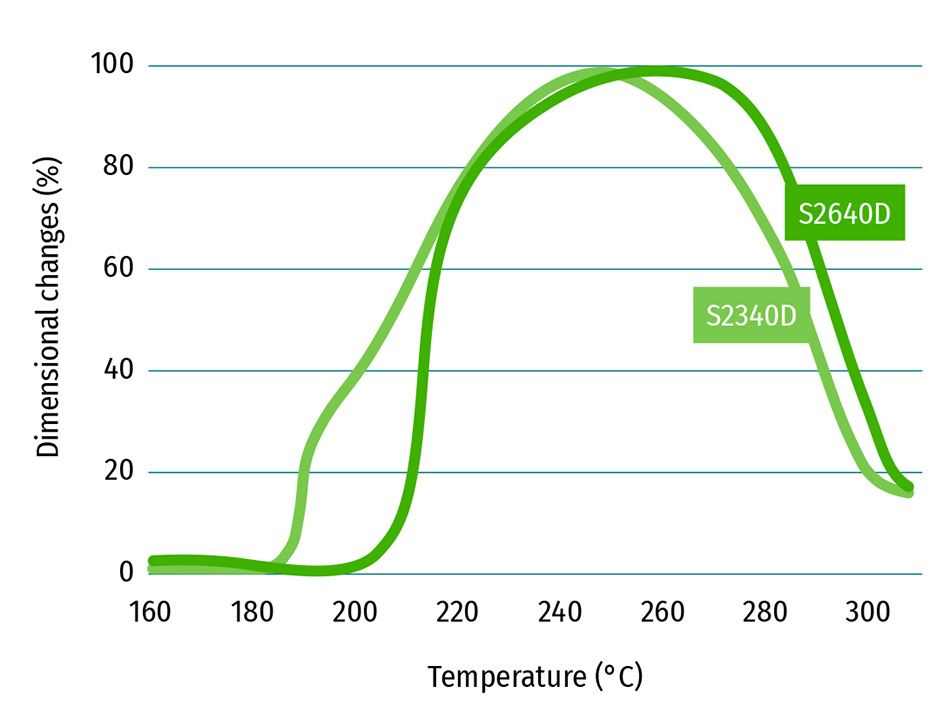
Masterbatch grades
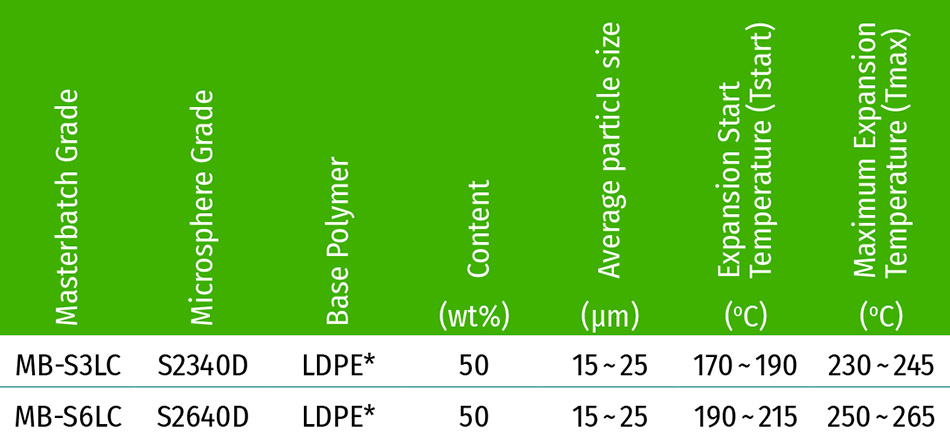 *LDPE: Low density polyethylene
*LDPE: Low density polyethylene
Video: Foam molding
Foam molding used KUREHA Microsphere
Extrusion foam molding
- S2340D: It's suitable for applications with molding temperatures from 190°C to 230°C. Suitable for expansion of engineered plastics such as PP and ABS.
- S2640D: The highest temperature sphere suitable for process temperatures that range from 230°C to 260°C or when avoiding expansion in step-1 of a 2-step molding process.
Example of process conditions
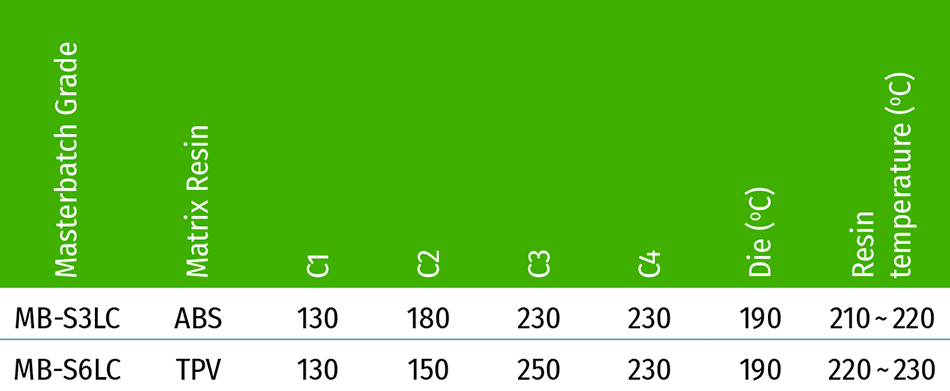 C1~C4 : Cylinder temperature (°C)
C1~C4 : Cylinder temperature (°C)
Injection foam molding
- Short shot method used in injection molding.
- Method in which small amount of melt is injected with respect to volume of cavity (Fig. A), and the space is filled by foaming (Fig. B).
- Specific gravity of the product depends on the amount of injected resin.
- KUREHA Microspheres expand when pressure drops (after passing through the nozzle).
- Recommend attachment of shut-off nozzle to prevent from resin dripping.
Temperature condition example
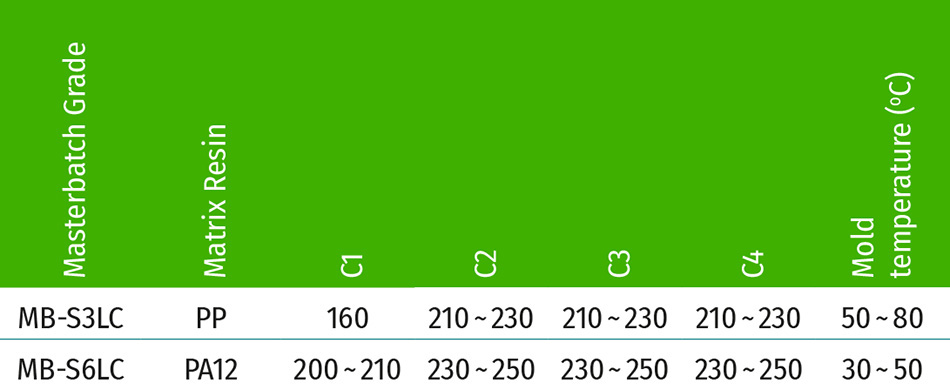 C1~C4 : Cylinder temperature (°C)
C1~C4 : Cylinder temperature (°C)
Physical Property
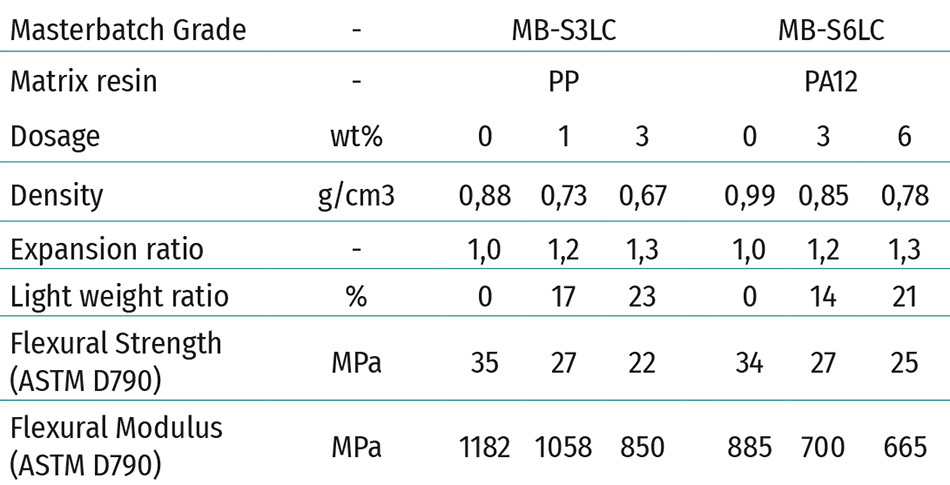
Sectional images of PA12 foams (MB-S6LC: 6 wt%)
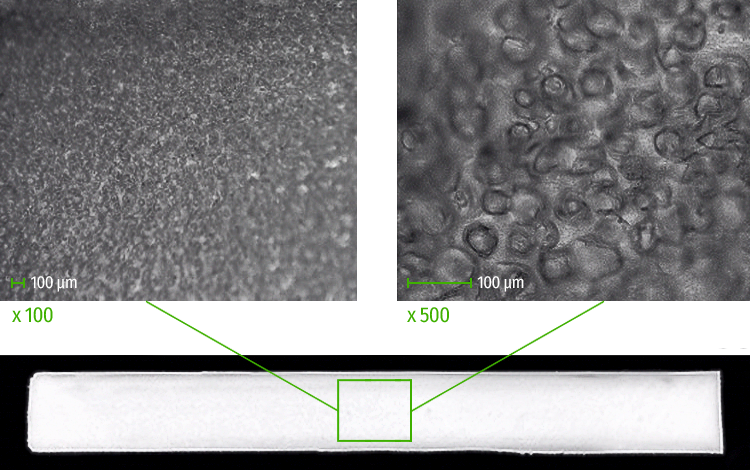 Size: 128 mm x 12.8 mm x 12.8 mm / Expansion ratio: 1.3 times / Particle size (Closed cell): 50 ~ 80 μm
Size: 128 mm x 12.8 mm x 12.8 mm / Expansion ratio: 1.3 times / Particle size (Closed cell): 50 ~ 80 μm
Improved moldability
- The use of KUREHA microspheres improve moldability (prevention of sink marks).
- 2% or less of masterbatched microspheres can improve molding performance.
Photo: Molded piece without KUREHA Microsphere
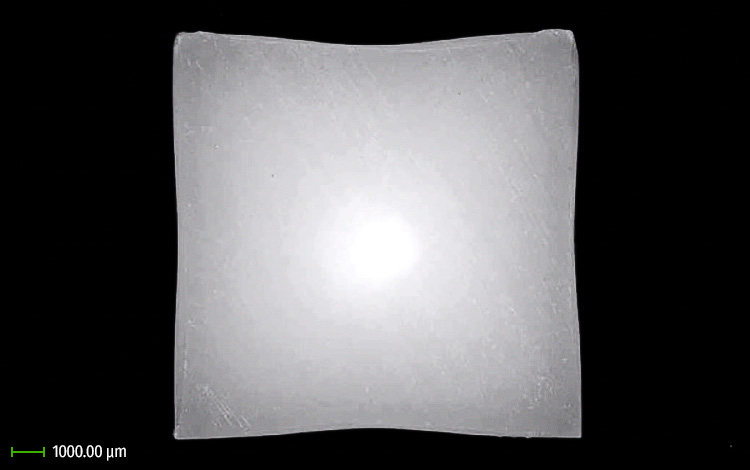
With KUREHA Microsphere
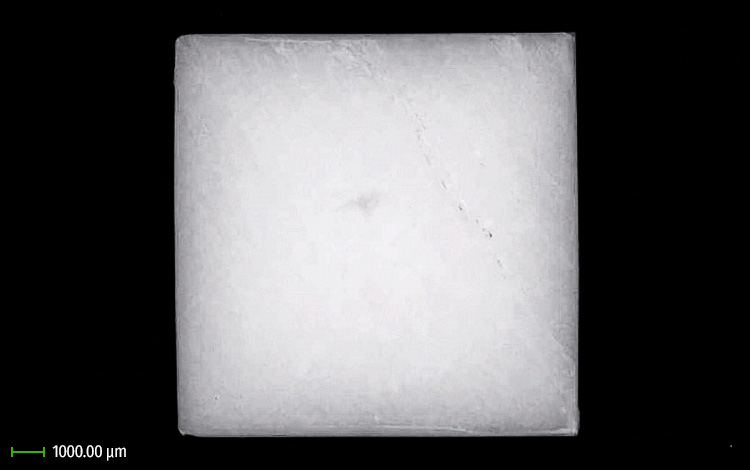
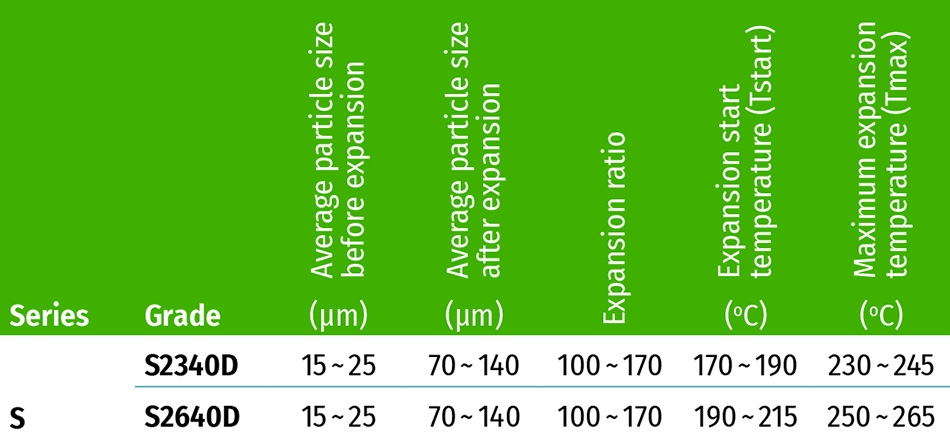

 *LDPE: Low density polyethylene
*LDPE: Low density polyethylene
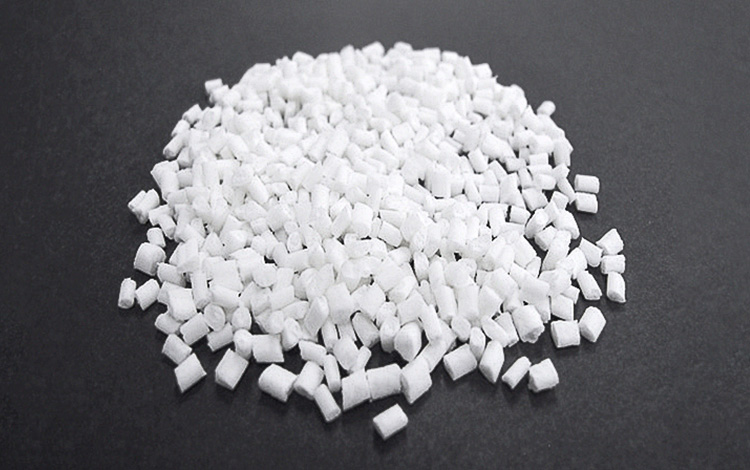
 C1~C4 : Cylinder temperature (°C)
C1~C4 : Cylinder temperature (°C)

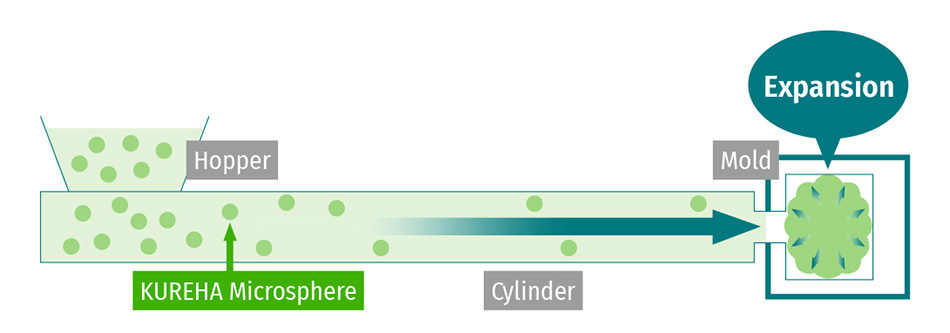
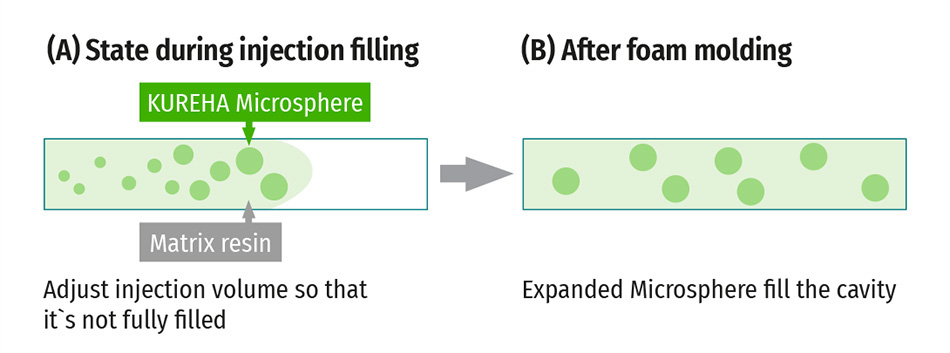
 C1~C4 : Cylinder temperature (°C)
C1~C4 : Cylinder temperature (°C)

 Size: 128 mm x 12.8 mm x 12.8 mm / Expansion ratio: 1.3 times / Particle size (Closed cell): 50 ~ 80 μm
Size: 128 mm x 12.8 mm x 12.8 mm / Expansion ratio: 1.3 times / Particle size (Closed cell): 50 ~ 80 μm

